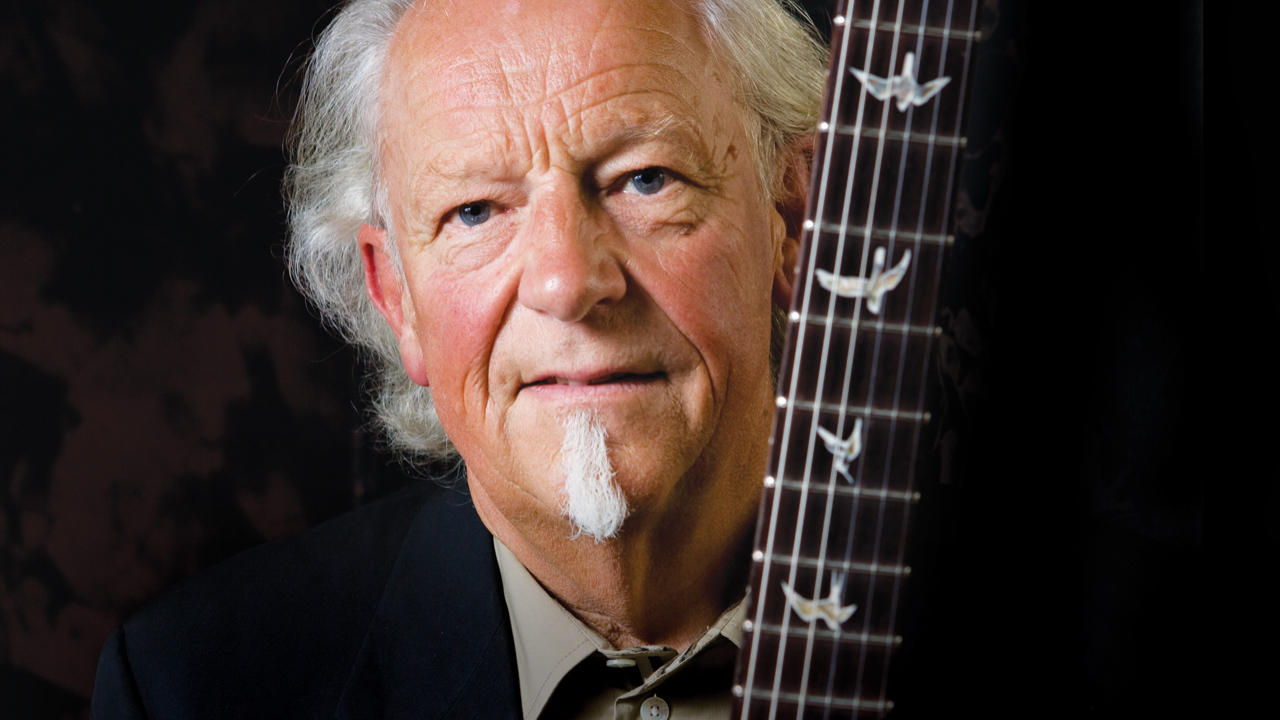Next year, former Jethro Tull guitarist Martin Barre will mark an incredible 50 years as a musician. He ditched a “boring” career in architecture and joined Tull in 1968. His unique style of playing has influenced the likes of Steve Vai, Joe Satriani and Joe Bonamassa. Back To Steel, his sixth solo studio album, dips in and out of many musical genres, but bubbling under the surface is his love of the blues…
*Back To Steel* has a real melting pot of styles, but there’s a blues flavour throughout. Was that deliberate?
When I started the album, I wrote so much music that I didn’t know where it was going. Funnily enough, someone who’s involved with prog music, in radio, wouldn’t play it because he said it was too bluesy! I was like, ‘Is it?’ I’m totally unaware of styles. It’s never mattered to me. It could be bluesy, jazzy, folky, but what’s the difference? Every morning, I pick up an instrument and start writing and don’t know what I’m going to end up with. Hopefully, it’s good – that’s the only criteria I have to take my music forward.
There’s a bluesy version of Eleanor Rigby on the new album. You’ve worked with Paul McCartney, what was that like?
When I started playing music in Birmingham, The Beatles were the band we all looked up to. You learned all their songs. If they released a new album, you’d rush out and buy it. I’ve grown up with them and love everything about that band. The melodies, their personalities… and Sgt. Pepper’s Lonely Hearts Club Band was a huge turning point in music. It made them really cool. Then I had the chance to work with Paul which was amazing. He’s a fantastic musician, obviously, and kind and intelligent. At every Tull gig, I’d play an instrumental or two to give Ian [Anderson, frontman] a rest. So, normally I’d write a piece but I was looking at *Eleanor Rigby *and wanted to play it Jeff Beck-ish. I did the arrangement but I never used it. I found it on a cassette later on and we played live almost a year ago. It worked so well that it’s ended up on the album.
Would you say, despite the myriad genres you’ve explored, that the blues has informed your ideas and playing throughout your career?
My roots are in the blues. The blues pentatonic is probably the basis of music. You can hear it in classical music. It’s everywhere. It’s the building blocks, whether you call it the blues or not. When I joined Tull, they were a blues band. I’d been in a blues band and played flute like Roland Kirk; I was playing guitar. Bluesy, a bit more jazzy. But there were a lot of guitar players in England playing the blues really badly. They were hearing Albert, BB and Freddie – all the Kings – and trying to learn their licks. But you can’t learn the licks, you have to live them. I don’t want to sound pretentious, but it’s not just something you can copy. It’s such a deep-rooted thing that very few players could really nail the blues.
Like who?
Peter Green did, Eric Clapton was doing it. There were some good players, but a lot of bad ones too. Because of them, I steered clear – I thought, you’re either going to be as good as Peter Green (which is virtually impossible) or you leave it alone. Find your own pathway through music. But the blues is always there. It’s the basis of everything you do on a guitar. You can’t get away from it.
What was your first blues experience?
Back in Birmingham in the early 60s, the blues – stuff like Howlin’ Wolf, Sonny Terry – there were a few standards being played by the bands. Then, I think that music sort of lost its way. It became pop music, soul music, Tamla. The mid-60s meandered throughout all these styles and I had to play the music that would get me a gig. But I wasn’t playing much guitar then; I played saxophone – which I hated. Then the blues train came to England and all these amazing guys were suddenly on TV: Buddy Guy, Freddie King, BB King, Albert King. There they were, singing and playing. I was like, ‘Wow! This is it!’ The penny dropped and the door to the blues was opened. It was always sort of there under everything else. There were a few little blues clubs with some great bands. John Mayall was around, but it wasn’t widespread. But then it became that and it was a great point for me.
Which one song defines the blues for you?
That would have to be [1968 single] Cold Feet by Albert King. It’s unbelievable. It’s just a jam in the studio, but wow, it’s cool! If you play other 45s from that era then play Cold Feet, it’s enormously loud and really hits you between the eyes.
You once took Joe Bonamassa out on tour early in his career. Did you have a ‘lightning in a bottle’ moment when watching him perform?
I don’t believe in that, with all due respect. He supported us for two months, so I saw a lot of him. He was good, had a good voice and had a lot going for him. He had a good band and I got up and played with him every night. They did a version of [Jethro Tull song] A New Day Yesterday. He was a very neat, interesting player but he’s developed amazingly. I love hearing his development and I love the fact he’s writing songs that have the blues in there, but expand on it. Dare I compare it, but if I have a blues album, it’s like that. It’s the blues – but a bit more.
He’s cited you as an influence…
Well, in a very nice way, he’s a geek. I’m a geek as well! He’s really dedicated to what he does and you can hear it in his tone, his vibrato, style and note placement – it doesn’t come accidentally. You work at that. What Albert King did sounds so simple, but it’s really, really hard to get that feel and phrasing. Stevie Ray Vaughan did it. There aren’t many that got close to it. Every note counts. Music has to have space.
What was the last album you bought?
Actually, that was Joe’s Different Shades Of Blue [2014]. I heard a song from his live album Muddy Wolf At Red Rocks on the radio and had to stop the car. I needed to know who it was. I didn’t know it was him.
What has the blues taught you?
Blues has a real discipline. It can have really simple chord changes, but if you don’t nail those changes and illustrate them with what you’re playing, then it doesn’t sound good. I’m still learning every day. Blues has taught me everything.
How much of your set will you dedicate to the new album on your live dates?
On next year’s tour, we’ll play all of it. At the moment, we’re playing about half of it. I was keen to see how the new songs are live. It’s an honest, genuine reaction. If they’re enjoying the music, then that’s a job done for me. It’s all about live, it’s everything. It’s what life is about. Playing live gigs is the start and finish of everything.
Back To Steel is out now via Garage Records

